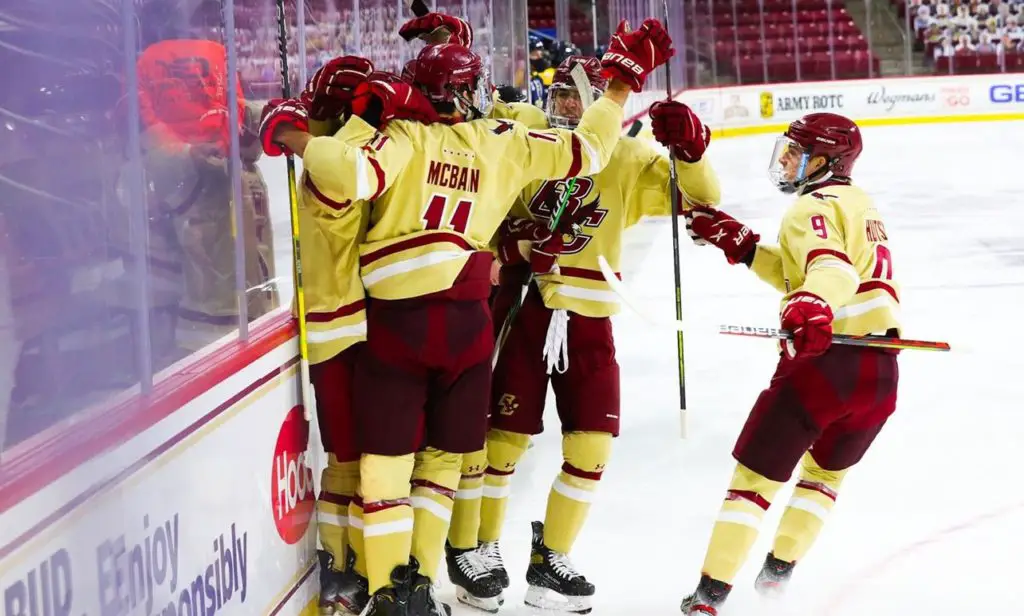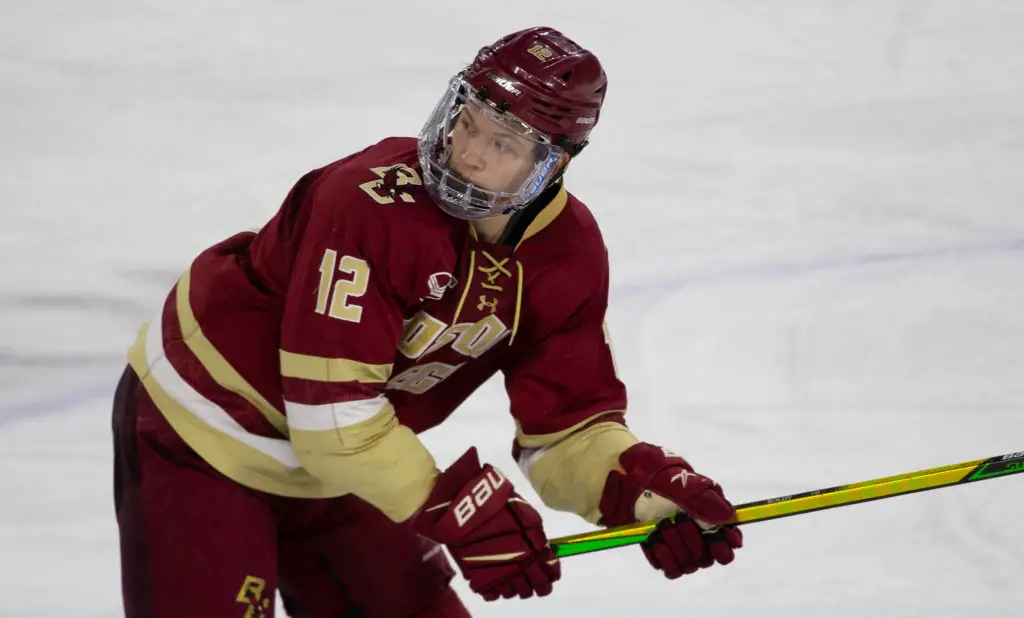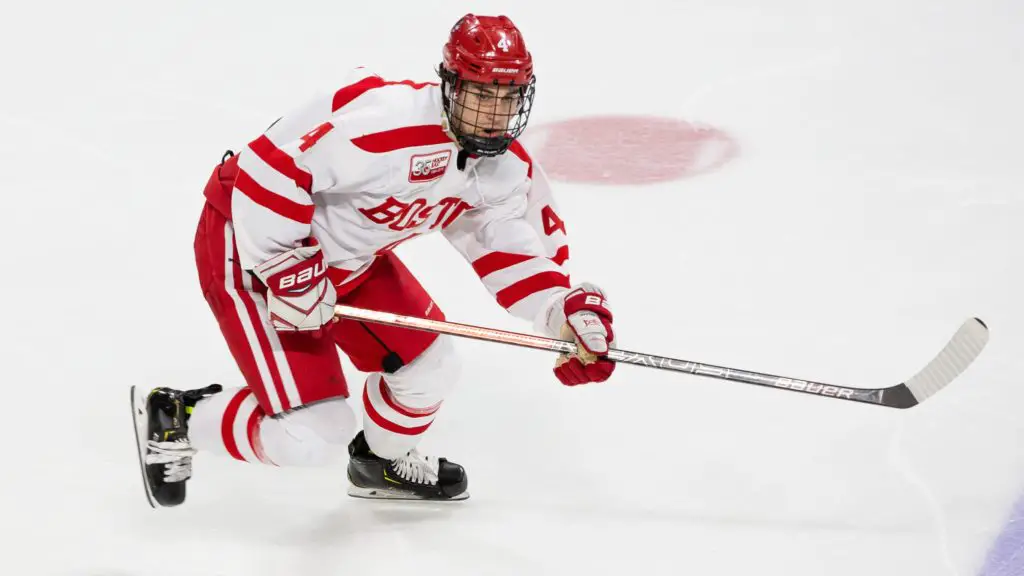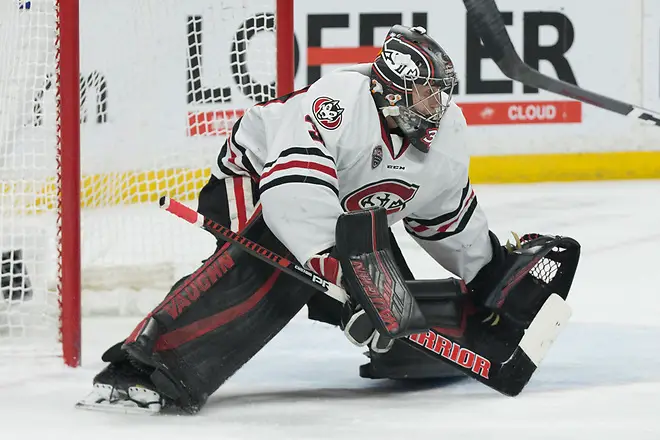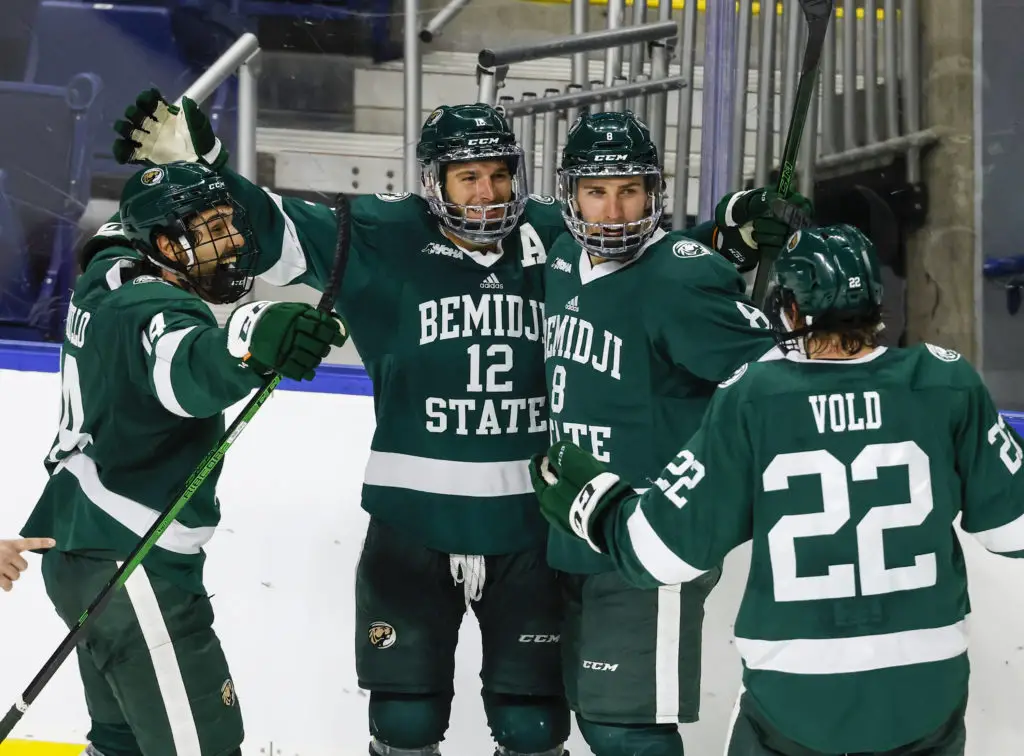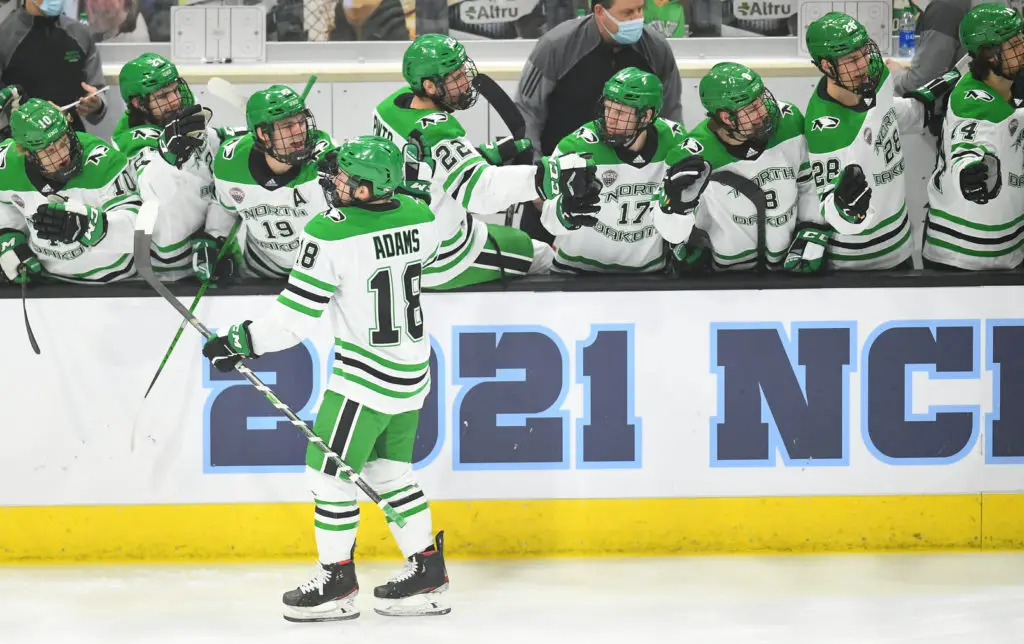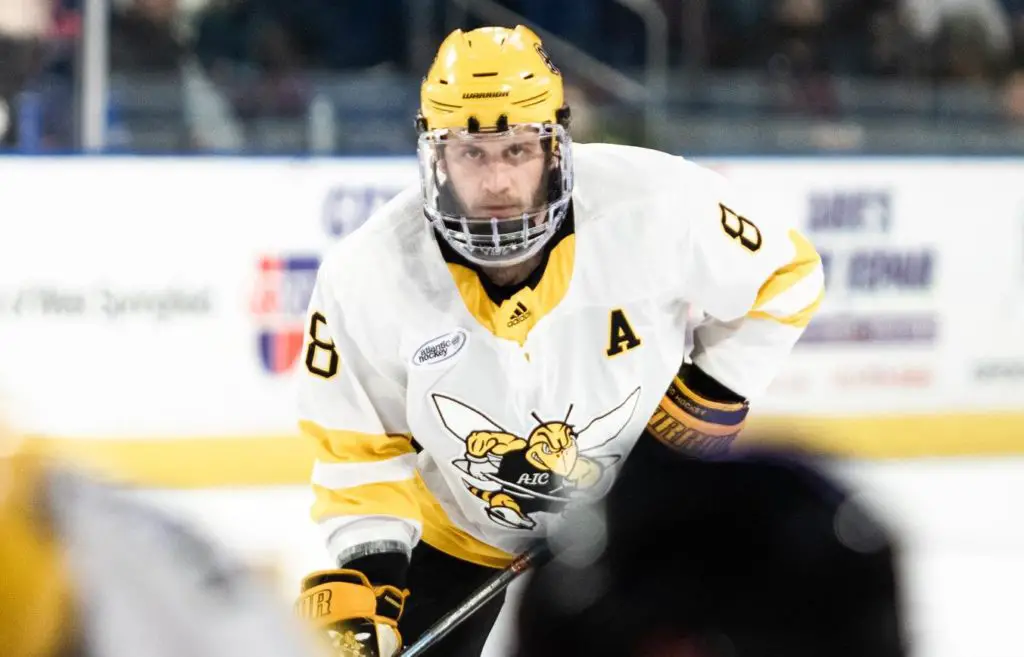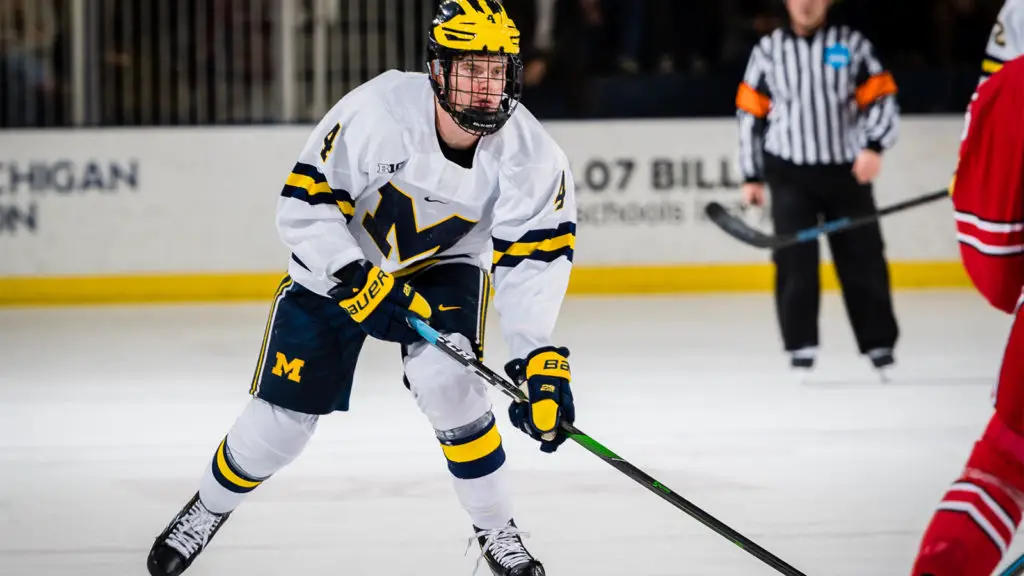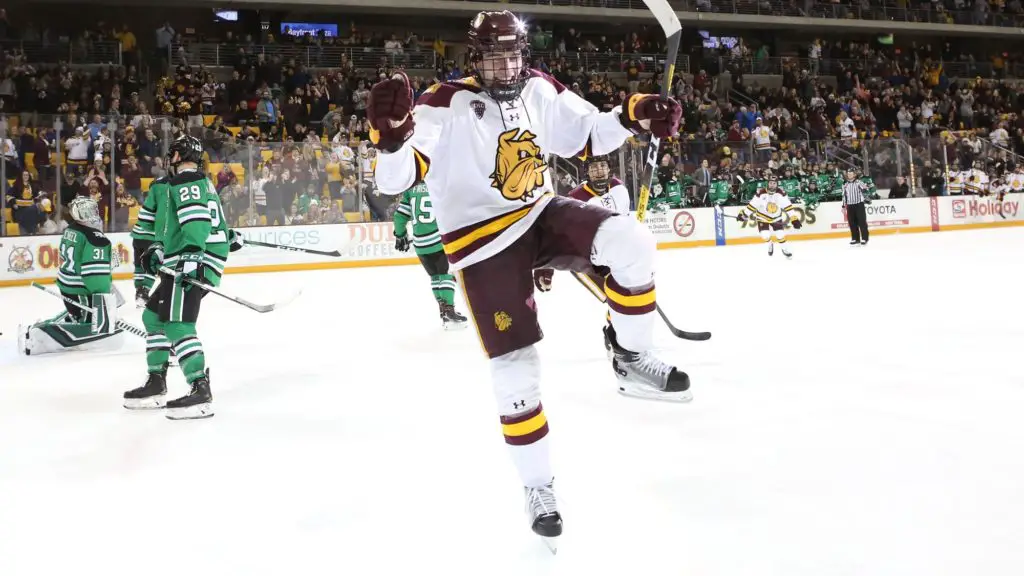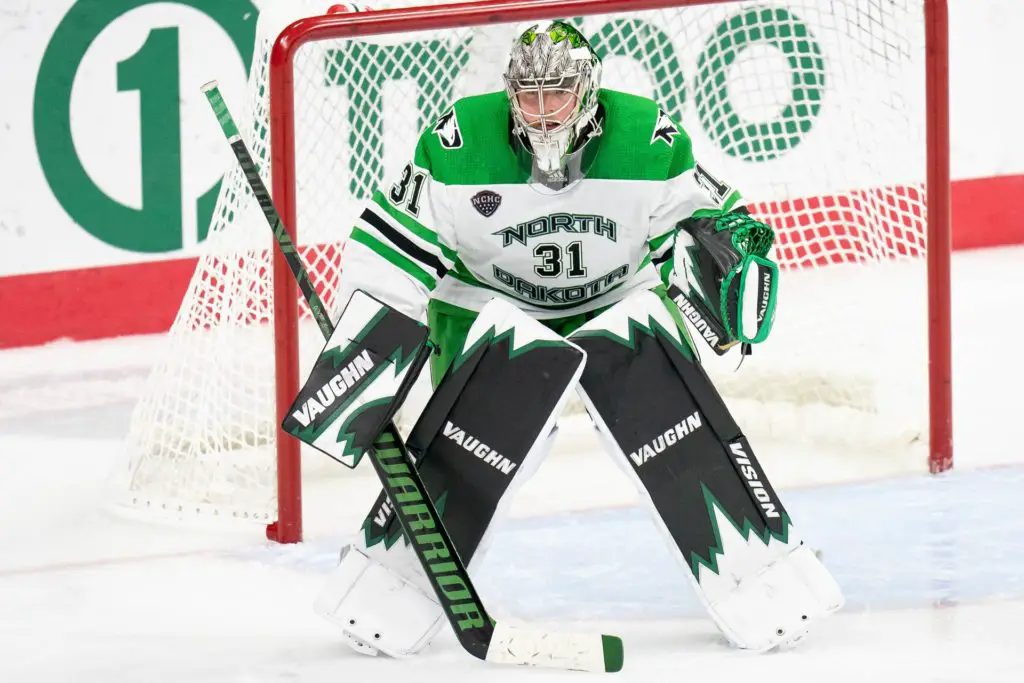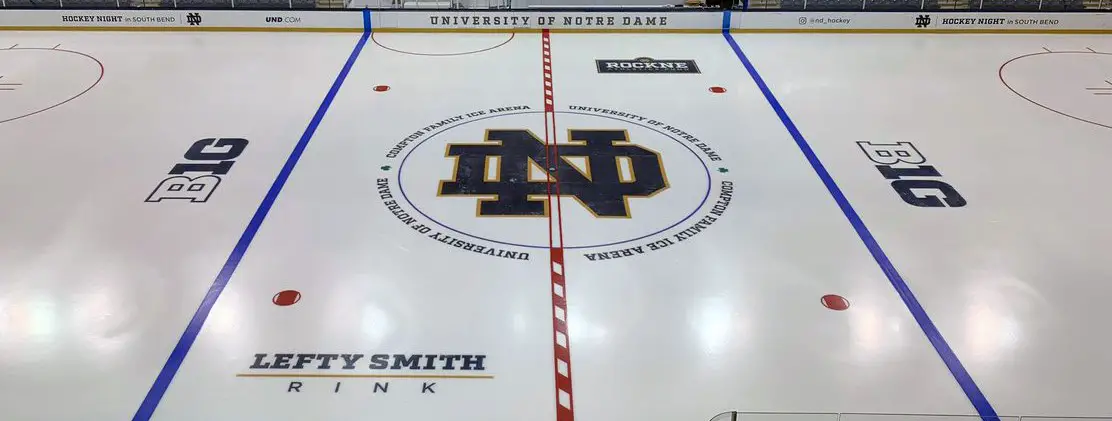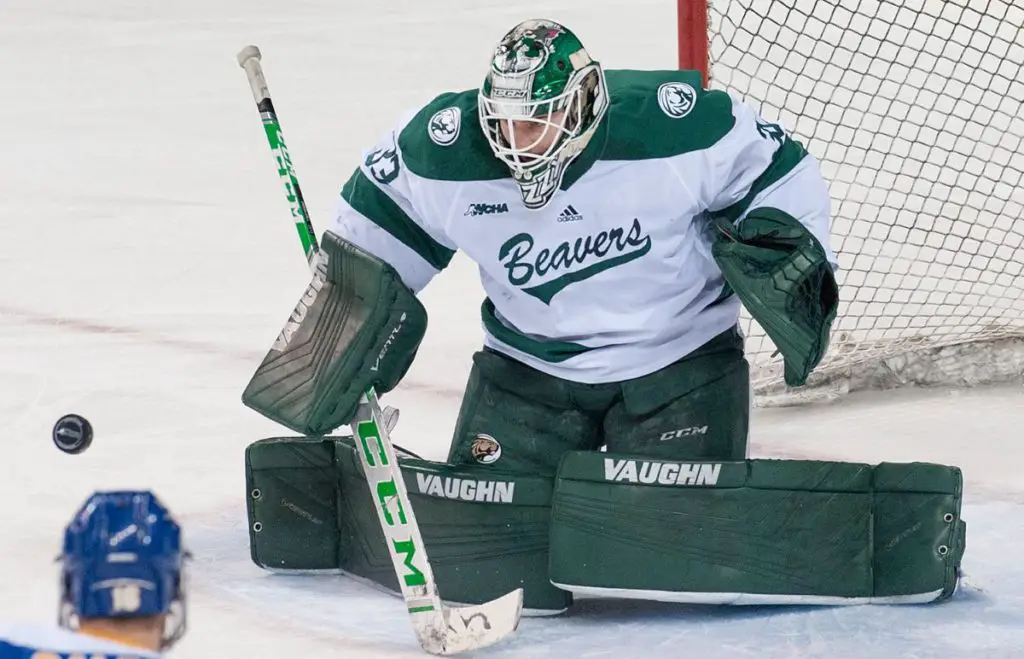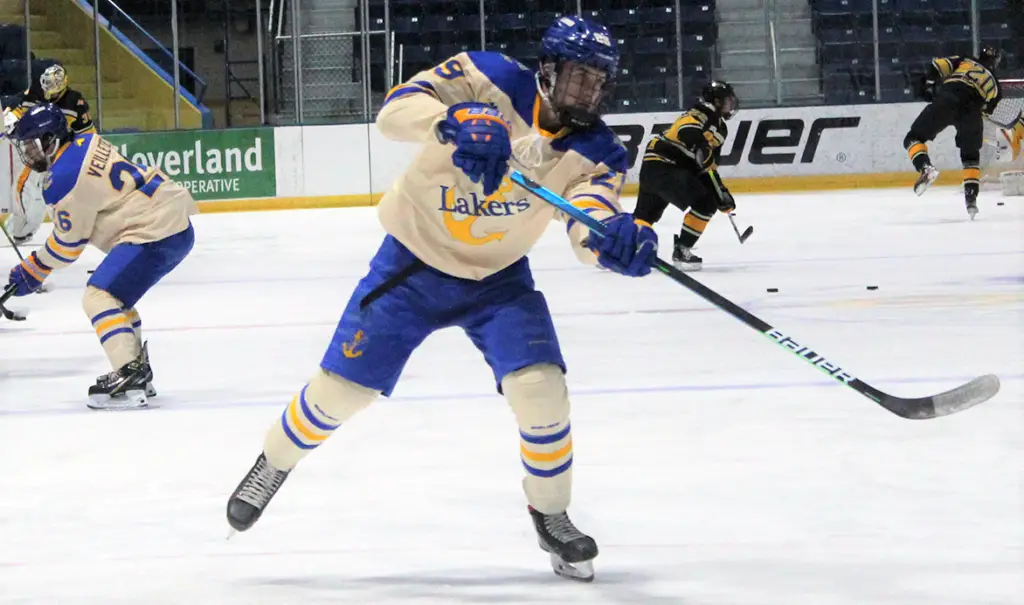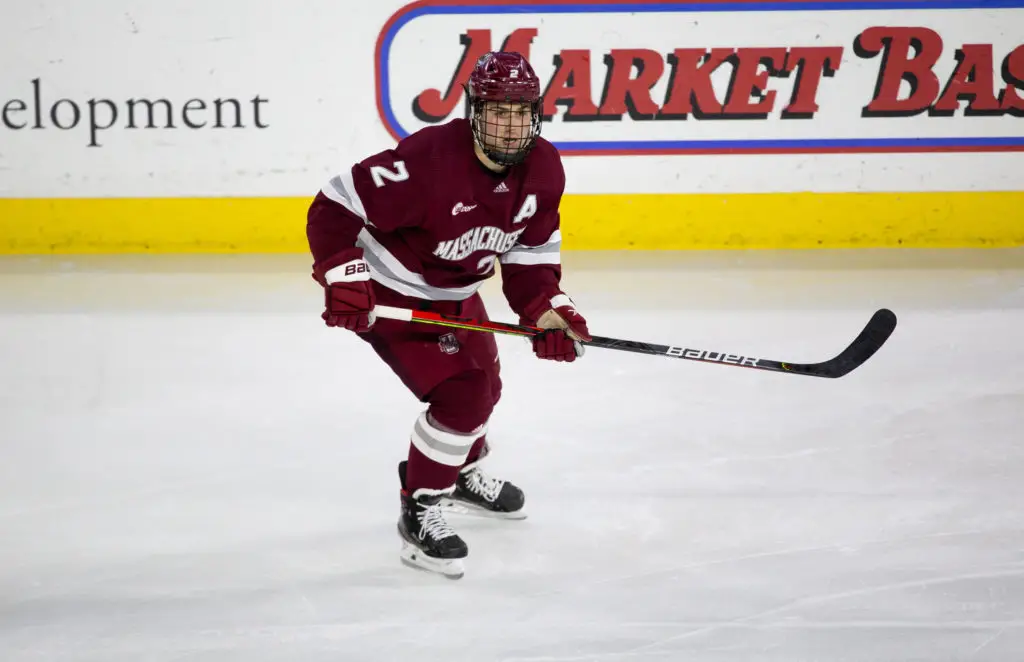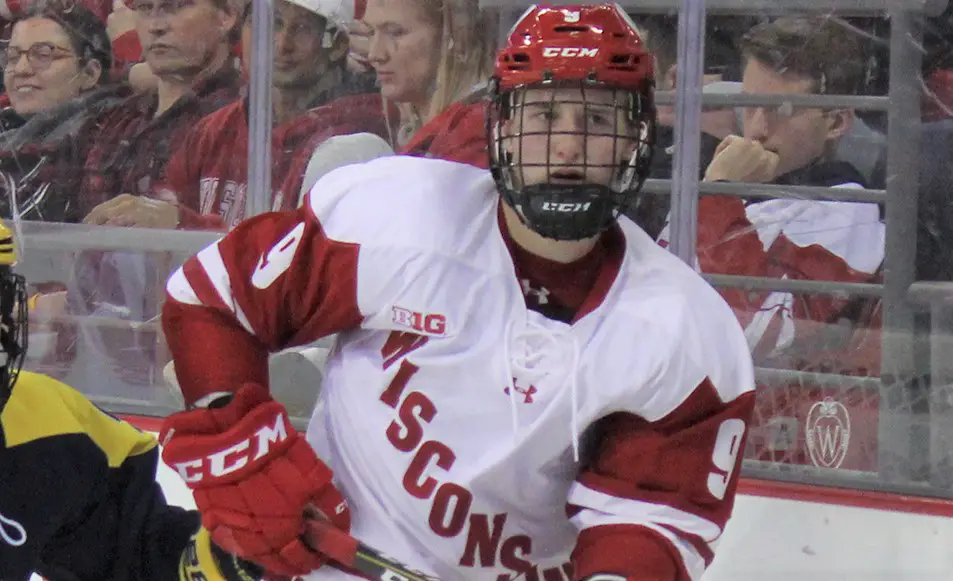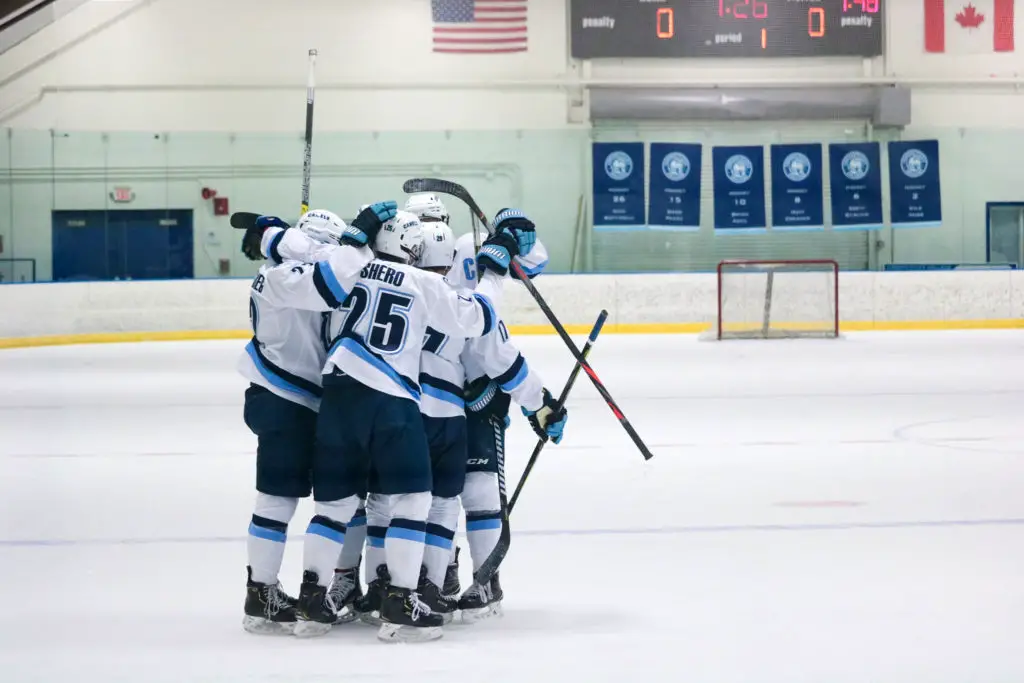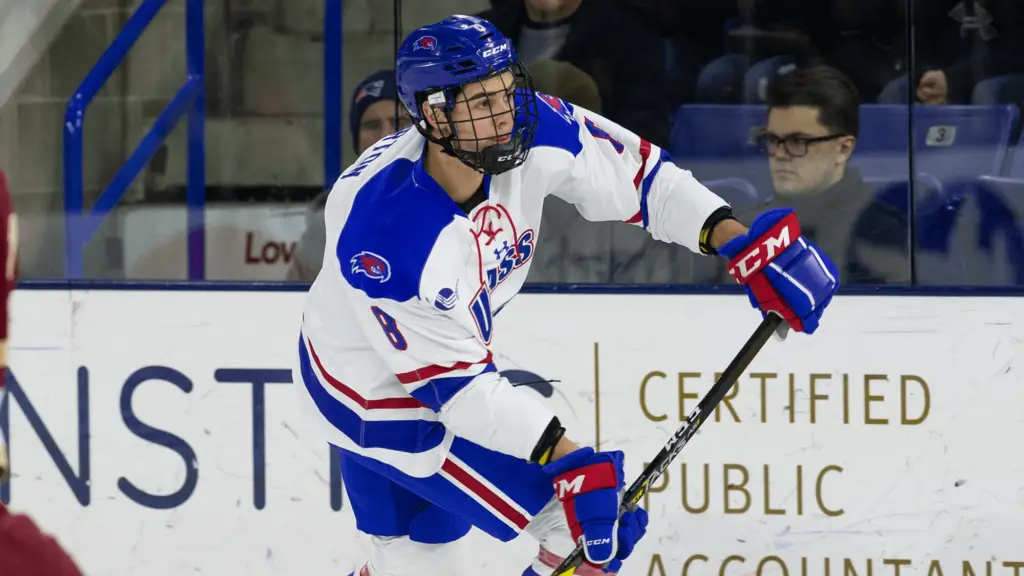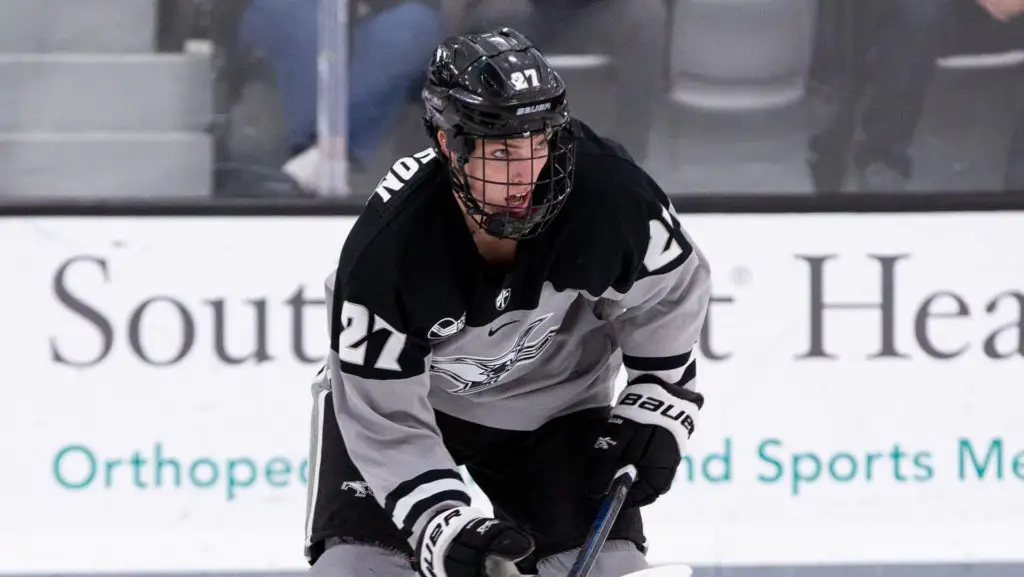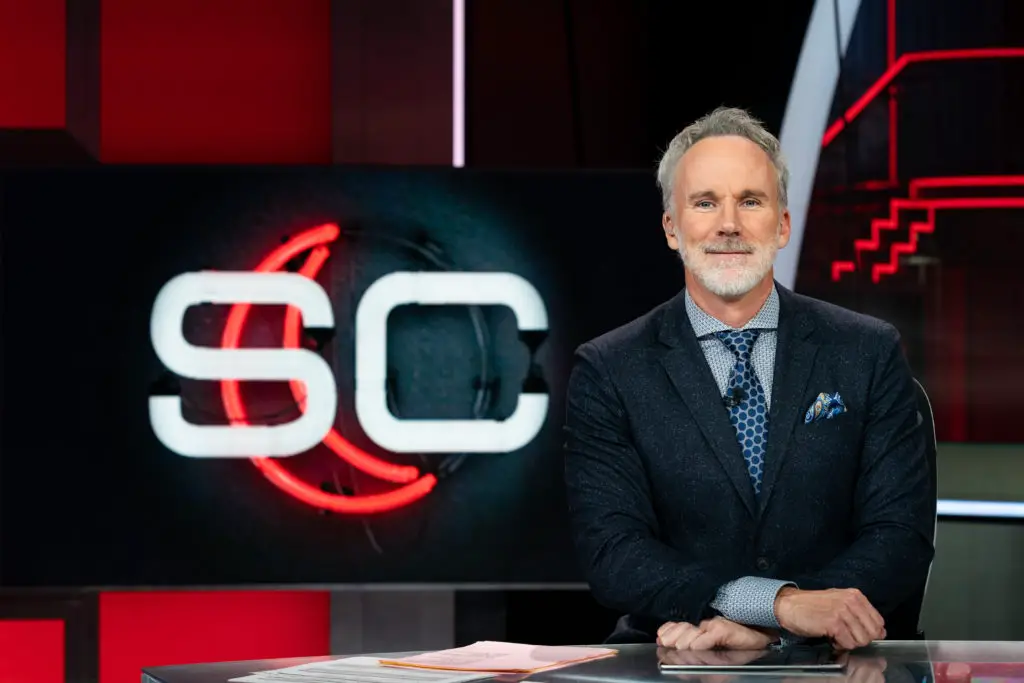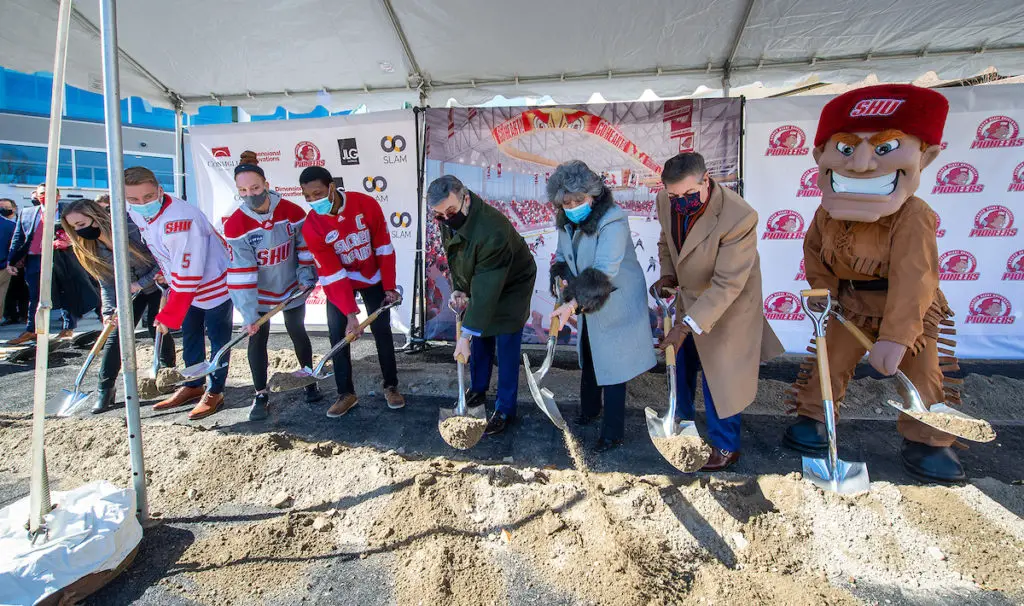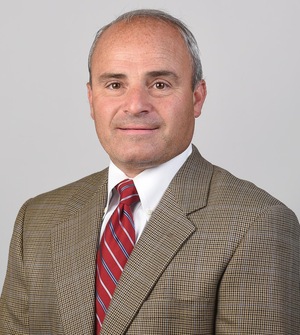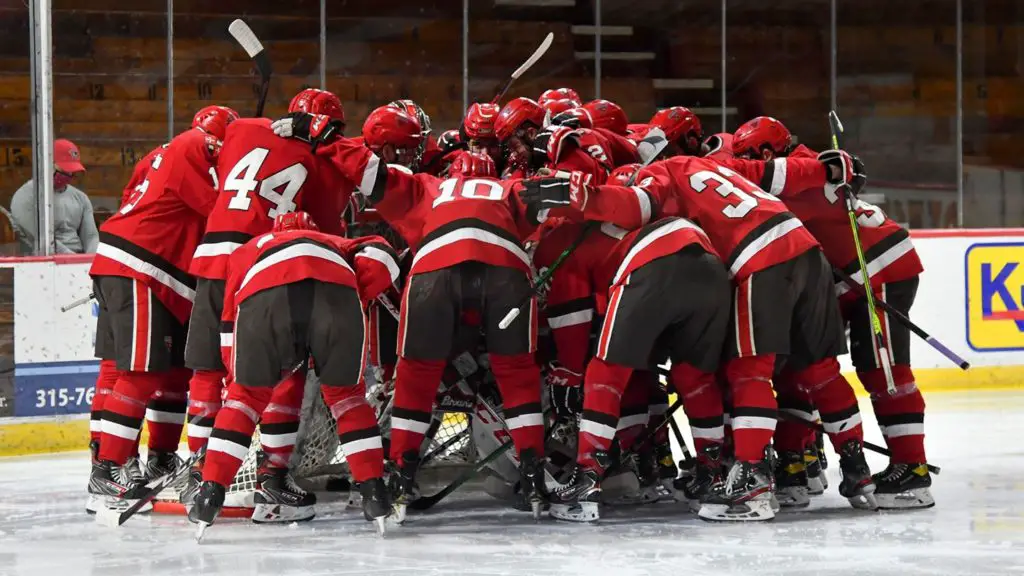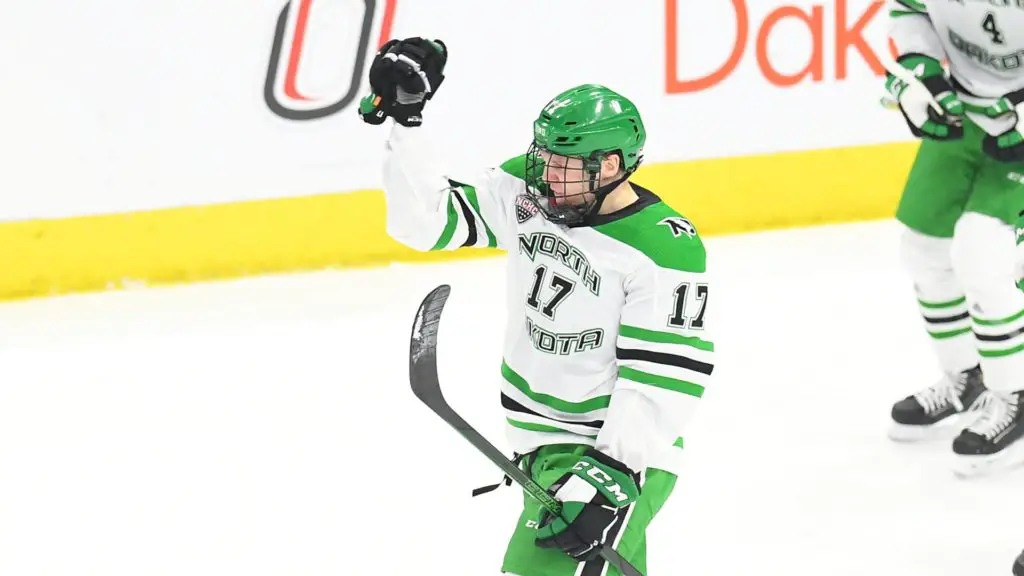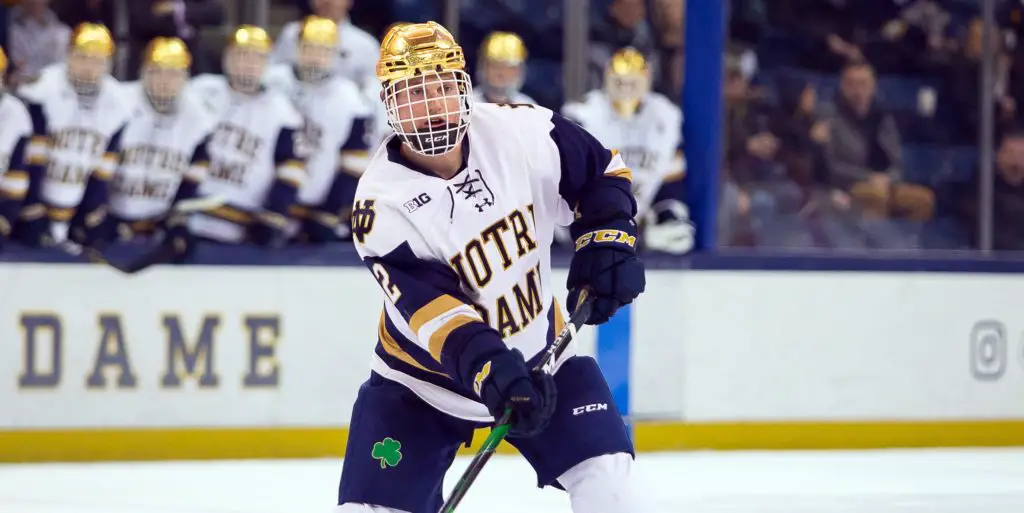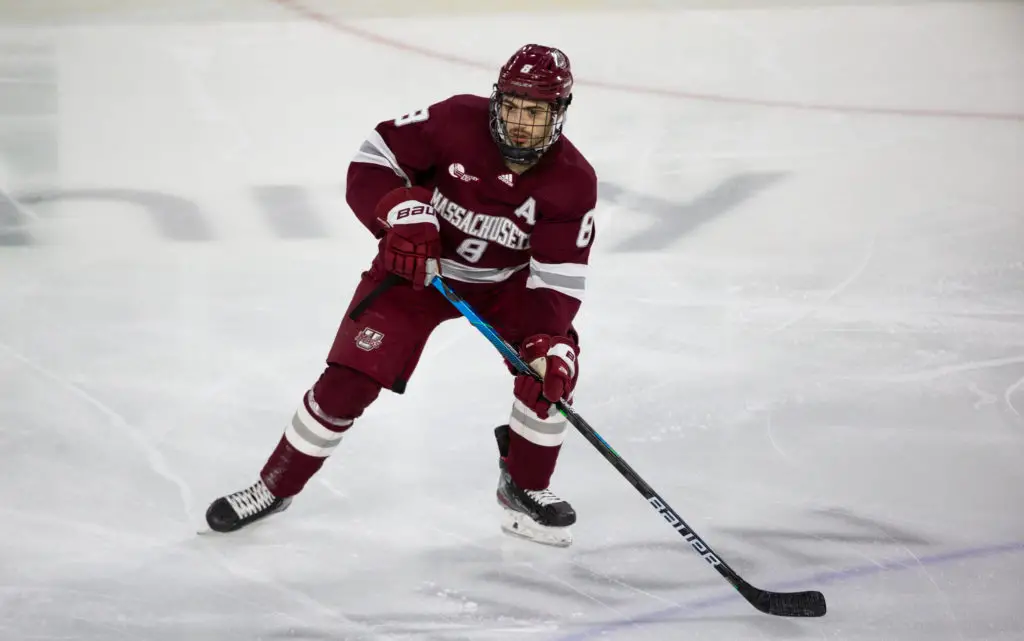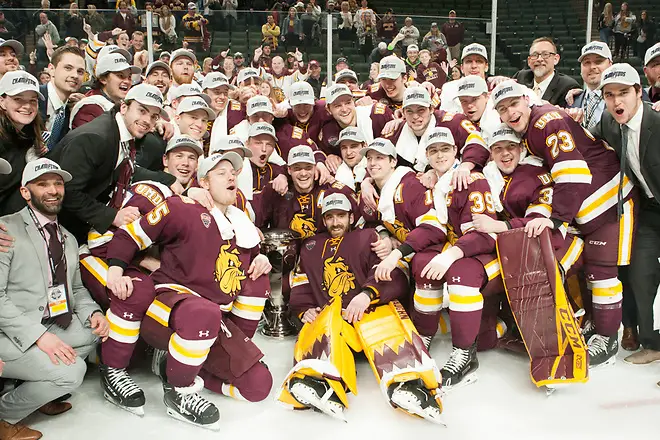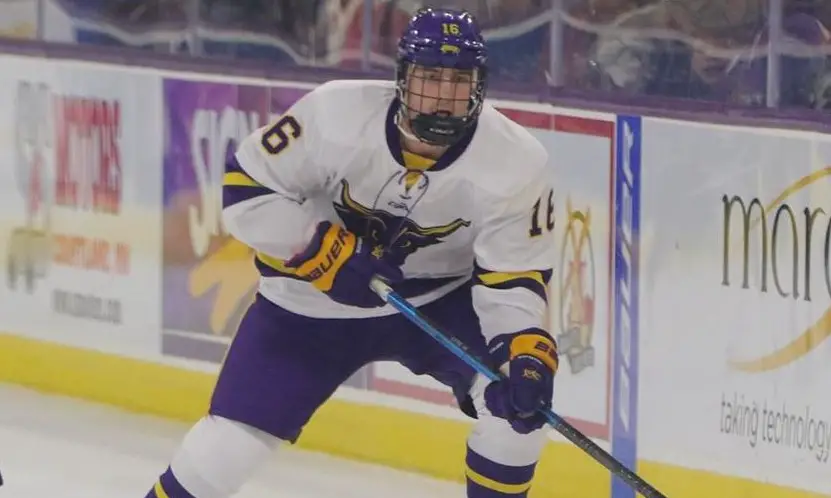
Loveland Regional, March 27-28
Budweiser Events Center, Loveland, Colo.
Saturday, March 27, 5 p.m. Eastern time, ESPN3/WatchESPN
No. 2 Minnesota State (20-4-1) vs. No. 3 Quinnipiac (17-7-4)
Saturday, March 27, 10 p.m. Eastern time, ESPNU/WatchESPN
No. 1 Minnesota (23-6-0) vs. No. 4 Omaha (14-10-1)
Sunday, March 28, 8 p.m. Eastern time, ESPN2/WatchESPN
Loveland Regional Championship
MINNESOTA
Season record: 23-6-0, (16-6-0 Big Ten, 2nd in Big Ten)
Playoffs to this point: Won Big Ten tournament (beat Michigan State in the quarterfinal, Michigan in the semifinal and Wisconsin in the championship game)
Top players: Junior forward Sampo Ranta (18-11-29), senior forward Sammy Walker (13-15-28), junior forward Blake McLaughlin (12-15-27), senior forward Scott Reedy (10-17-27), sophomore forward Ben Meyers (11-15-26), senior forward Brannon McManus (9-16-25), sophomore defenseman Jackson LaCombe (4-16-20)
Top goalie: Senior Jack LaFontaine (21-6-0, 1.74 GAA, .936 SV%)
Why they will advance to Pittsburgh: A few weekends have brought them back down to earth, but the Gophers have been one of the hottest teams since the puck dropped this season. After the Big Ten Tournament, it really looks like Minnesota is flying high.
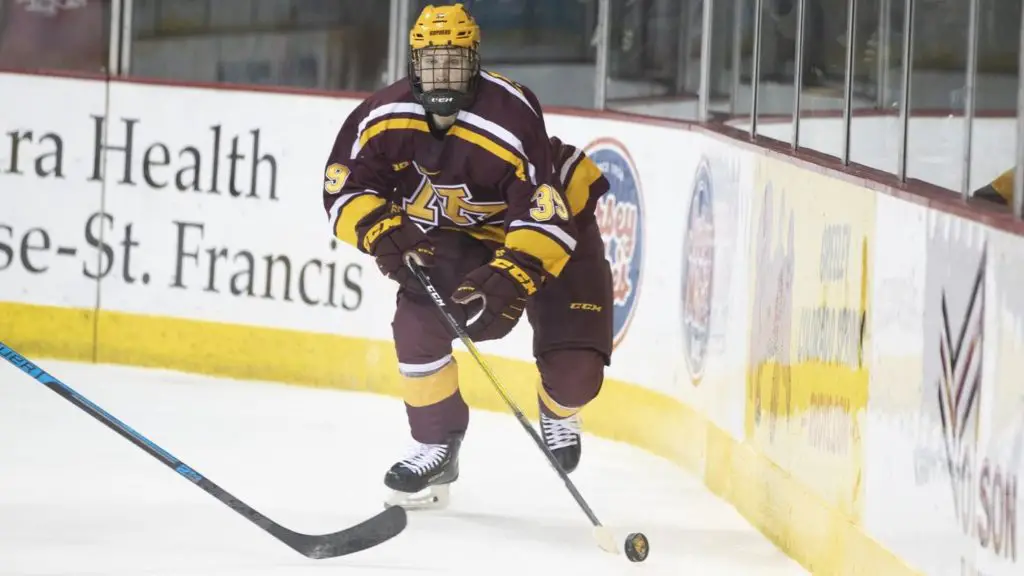
Why they will not advance to Pittsburgh: Omaha is a tough four seed to draw, as is whichever team the Gophers would face in the next round. The NCAA tournament alone is a new experience for this group, and when you add COVID protocols keeping focus might be a challenge.
Minnesota had not made the NCAA tournament since 2017 and Bob Motzko knew he was brought to campus to change that fact.
“This program, it’s expected here,” Motzko said on Sunday. “We knew we’d get back there. We’re there, really that’s really all that matters, we’re there now and we earned our way in. We’re excited, we are excited to be there. None of our guys have been there. The senior class, they get to hang a banner and now they get to get in the NCAA tournament and all you hope is you’re just playing your best when you get in that thing.”
Minnesota put itself in a good spot with a great regular season, narrowly missing out on the title to Wisconsin, and had a strong showing in the Big Ten tournament beating the Badgers for the title.
The Gophers are the third overall seed in the tournament and will play Omaha in Loveland, Colo., on Saturday evening. Motzko, speaking while the selection show was still happening, said he had to do some video work on the Mavericks and added that the tournament adds another wrinkle because you have to scout three teams ahead of time.
“You’re on edge, I can tell you that,” he said. “Ninety percent, though, of our concentration is going to be on how we play and how we get our team ready to go.
“What a difficult job for the NCAA committee. I think they’re all going to be happy to get out of this year and go back to the numbers.”
Though none of Minnesota’s players have tournament experience, Motzko said he wasn’t worried about how they’d perform under the bright lights.
“I like our makeup, we’ve got enough grit and determination, and our league battle tests us,” he said. “This was the best our league’s been in my three years. The Big Ten, this year, was four and five teams deep.”
Though it’s his first time as the head man at Minnesota, Motzko took St. Cloud State to the tournament eight times during his 13 years. That included a Frozen Four run in 2013, but, it also included a massive upset by Air Force days before he took the Gophers job.
“I’ve had some high highs in this tournament, and I’ve had some low lows, but the bottom line is you’ve been in it a lot and that’s what you’re going to have,” Motzko said. “If you’re in it 10 times you’re going to have high highs and you’re going to have low lows. You’ve just got to just keep plugging away.”
— Drew Claussen
MINNESOTA STATE
Season record: 20-4-1 (13-1-0 1st in WCHA)
Playoffs to this point: Defeated Ferris State in the WCHA quarterfinals, lost to Northern Michigan in the semifinals
Top players: junior forward Julian Napravnik (10-15-25), sophomore forward Cade Borchardt (8-14-22), sophomore forward Nathan Smith (5-16-21), senior forward Reggie Lutz (10-10-20)
Top goalie: junior Dryden McKay (19-3-0, 1.40 GAA, .930 SV%)
Why they will advance to Pittsburgh: Simply put, the Mavericks will go as far as McKay can take them. The junior netminder was named WCHA player of the year and goaltender of the year while also finding himself on the All-Conference first team. The third-year starter has the best GAA in the NCAA.
Why they will not advance to Pittsburgh: The Mavericks’ loss to Northern Michigan in the WCHA semifinals, at the Verizon Center in Mankato, Minn., was troubling, to say the least, especially when considering that slow starts continue to plague them.
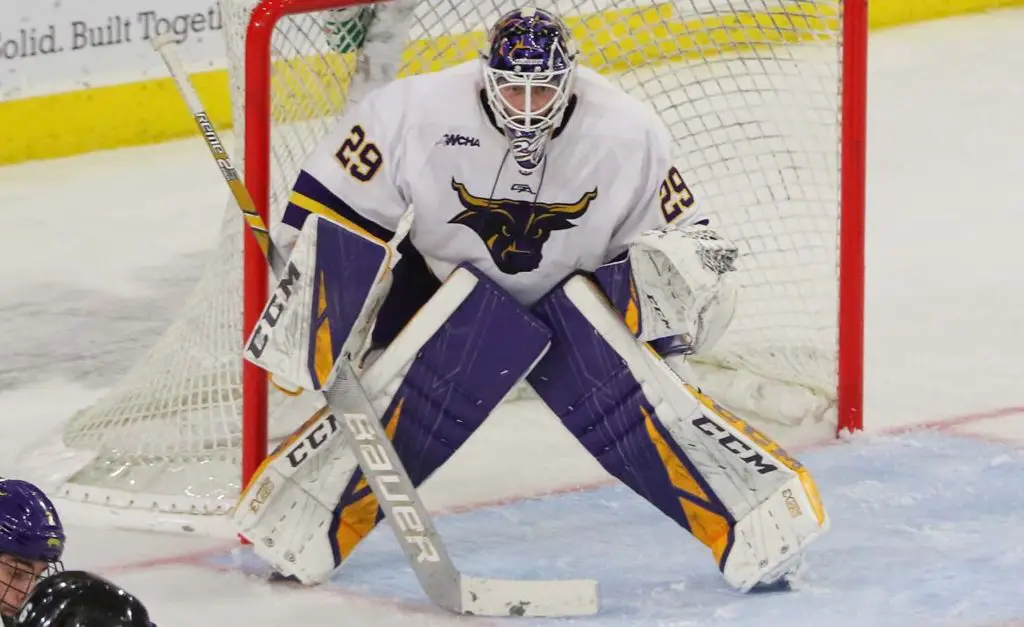
The Wildcats were playing without junior forward Griffin Loughran, and yet they scored four goals on their first 11 shots of the game. Goals by WCHA leading scorer Andre Ghantous, Alex Frye, Joseph Nardi, and A.J. Vanderbeck in the game’s first 31:05 exposed concerns with the Mavericks’ defense.
“I thought we let the game get away from us and didn’t react real well to adversity,” said Mavericks coach Mike Hastings after the loss. “Without putting into simpler terms, (Northern was) hungrier.”
The Wildcats only had 17 shots through the first two periods and managed to only get three more through in the third period. However, that was more than enough as they chased McKay after Vanderbeck’s goal at 11:05 of the second period.
While the Wildcats struck only once in the first period and three times in the first half of the second, Hastings feels that his team’s starts continue to be an issue.
“Until you get burned by something, you don’t know how hot it is,” he said. “We’ve discussed it. We’ve tried to address it.”
McKay will be a big key if the Mavericks’ early-game struggles continue.
“In the near past, we’ve been able to overcome a slow start because Dryden McKay has allowed us to by keeping the puck out of our net, giving us a chance to get our feet underneath us,” Hastings said.
With little time to prepare before they face Quinnipiac Saturday, Hastings wants his team to learn the lesson now.
“We have to move on,” he said. “Slow starts or adversity is something that you are going to face. We haven’t faced a lot of it, so we have to learn from it quickly.”
— Daver Karnosky
OMAHA
Season record: 14-10-1 (fourth in NCHC)
Playoffs to this point: Lost to Denver in the NCHC quarterfinals
Top players: defenseman Brandon Scanlin (2-14-16), forwards Chayse Primeau (9-14-23), Tyler Weiss (7-14-21) and Taylor Ward (11-9-20)
Top goalie: Isaiah Saville (12-10-1, 2.86 GAA, .912 SV%)
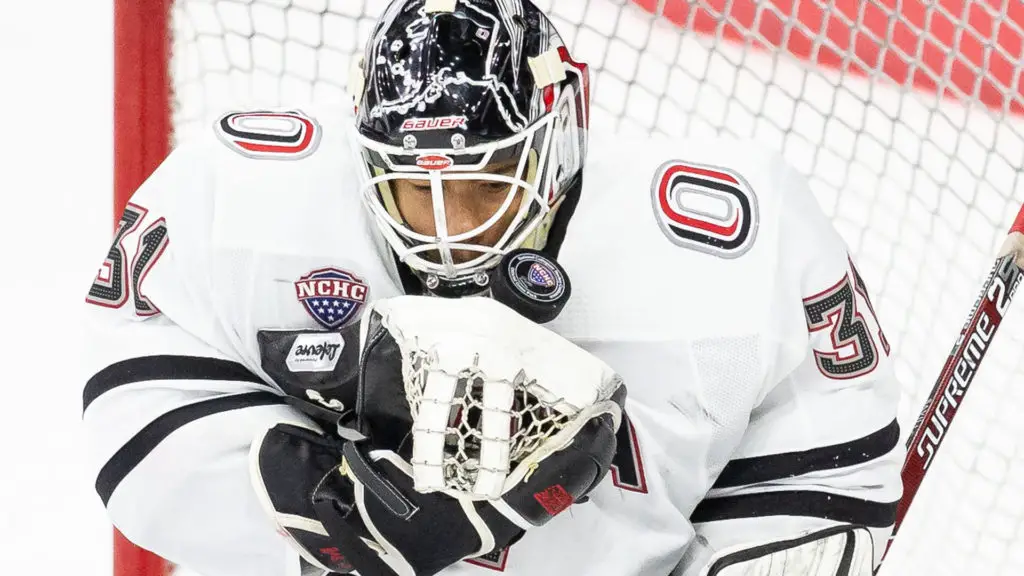
Why they will advance to Pittsburgh: It’s been a while, but in 2015, the last time Omaha got into the NCAA tournament, the Mavericks made their first Frozen Four appearance. Minnesota, Minnesota State and Quinnipiac make for a bear of a regional field to have to play against, but any of those teams could get to Pittsburgh if they heat up at the right time.
Why they will not advance to Pittsburgh: Omaha was a bubble team right up until the tournament selections were announced, and the Mavericks hadn’t a consensus pick from prognosticators to get in. They also went one-and-one out in the NCHC tournament, so while they’ll come into Saturday’s game rested, they might need to start fast against a very good Minnesota team.
Saturday night’s first-round game between Omaha and No. 3 Minnesota will provide a landmark moment for the Mavericks, making their first NCAA tournament appearance under fourth-year coach Mike Gabinet.
Making the 16-team field was far from guaranteed, though, for a UNO team that finished fourth in the NCHC regular-season standings and then lost to fifth-seeded Denver in the first round of the NCHC tournament. The Mavs then had a week off before learning on Sunday that their postseason run wasn’t done yet.
“Lots of nervous energy, I think, all of last week leading up to (the regional first-round pairings being announced), where you’re kind of on pins and needles a little bit, but the guys were excited,” Gabinet said.
“You could tell that this is a group that wants to play. This isn’t a group that is just happy being a good team. They want to play the game, and those are the types of guys that we recruited here, and those are the types of guys you want playing.”
And they’ll be playing against at least one formidable foe in Loveland, although Gabinet feels the Mavericks are ready for that challenge. Playing in the meat-grinder of the NCHC, Gabinet feels, brings out a lot in a team with postseason aspirations.
“I think that’s one of the benefits and one of the negatives of playing in our conference,” Gabinet said. “As a coach, you don’t get too many nights off of just feeling comfortable going into the weekend, and with (UNO’s) nine one-goal games this season, lots of very close games against extremely good competition.
“I think our players can draw on that, and I think our staff can draw on that. We’ve experienced the best of the best and we know what we have to do to be successful against those opponents.”
— Matthew Semisch
QUINNIPIAC
Season record: 17-7-4 (10-4-4 ECAC Hockey, first)
Playoffs to this point: Lost to St. Lawrence in the ECAC Hockey title game
Top players: Forward Odeen Tufto (7-38-45, leads nation in faceoff percentage), forward Ethan de Jong (14-15-29), forward Ty Smilanic (14-7-21), defenseman Zach Metsa (5-21-26), defenseman Peter DiLiberatore (5-14-19)
Top goalie: Keith Petruzzelli (17-7-4, 1.82 GAA, .927 save percentage)
Why they will advance to Pittsburgh: Quinnipiac hasn’t been dominant in any one area but is a well-balanced team.
The Bobcats are 11th in the country in scoring, sixth in team defense, fifth in both power play and penalty kill, and second in faceoff percentage.
Why they will not advance to Pittsburgh: The Bobcats enter the national tournament on a two-game losing streak. That includes a loss to St. Lawrence in the conference championship, a game where Quinnipiac did not play well for lengthy stretches. Quinnipiac only faced three teams with a winning record all season and finished 4-4-2 against Bowling Green, AIC, and Clarkson.
It was an anxious 24 hours for Quinnipiac after losing to St. Lawrence in the ECAC Hockey Championship Saturday, but the Bobcats are back in the NCAA tournament for the second time in as many eligible seasons.
The Saints beat Quinnipiac 3-2 in overtime Saturday to claim the conference’s auto bid. The Bobcats seemed likely to get an at-large bid, but even that was uncertain due to the absence of the PairWise rankings this season.
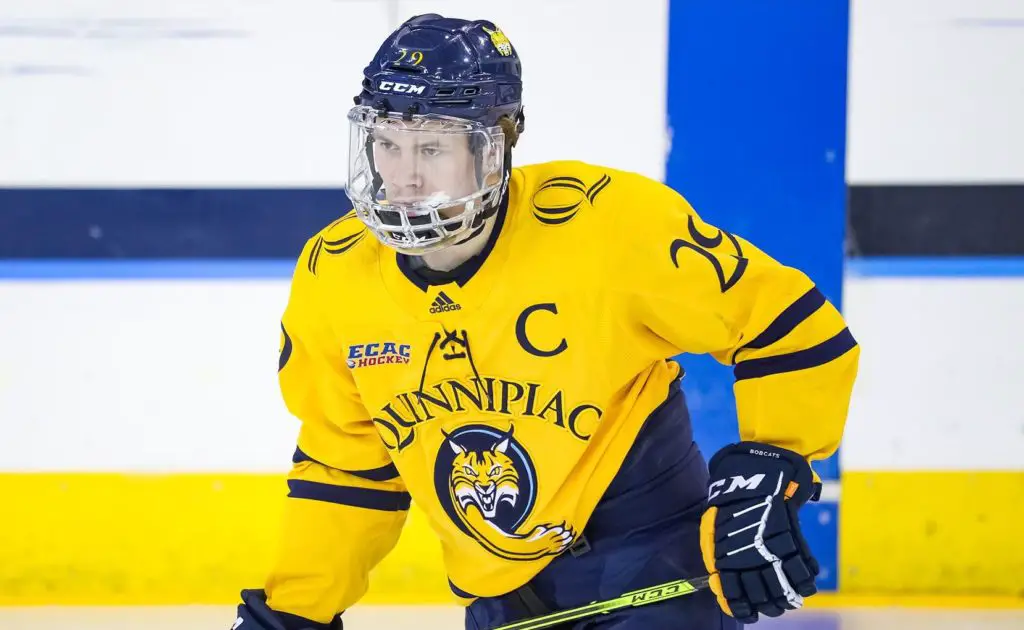
But shortly before Sunday’s selection show, St. Lawrence announced it was withdrawing from the NCAA tournament due to coach Brent Brekke positive COVID-19 test. That gave ECAC Hockey’s auto bid to the Bobcats, who are the third seed in the Loveland Regional and will face No. 2 Minnesota State Saturday at 4 p.m. EDT.
“It seems like we were given a little bit of a gift and we’ve got to use that to our advantage,” Tufto said. “We’ve got a great opportunity here this upcoming weekend.”
Tufto is one of three Hobey Baker finalists who will play in Saturday’s game: McKay and Petruzzelli are the others.
Tufto has helped drive the Bobcats puck possession game this year. He leads the nation in faceoff winning percentage and is a dominate force in all three zones.
But it’s going to take more than just having the puck for Quinnipiac to win, as it found out last weekend against St. Lawrence.
“We’ve got to realize how hard playoff hockey is,” Bobcats associate coach Joe Dumais said. “It’s extremely tough and you have to make sacrifices. It’s physical; they don’t call a lot of penalties, which [goes] both ways. It’s hard to get to the net. You have to be willing to sacrifice bodies to get to the net.”
That applies on defense too. Petruzzelli has had an outstanding season, but Quinnipiac’s inability to box out rebounds on their net resulted in two Saints goals last weekend.
“We didn’t box out twice and it was in the back of our net,” Dumais said. “The little things matter at this level.”
Quinnipiac did get a boost last weekend with the return of forward Wyatt Bongiovanni to the lineup. The junior hadn’t played since December due to injury but scored his fifth goal in eight games this season Saturday. Head coach Rand Pecknold said last week that Tufto could have had 60 points this season if Bongiovanni was healthy.
— Nate Owen
